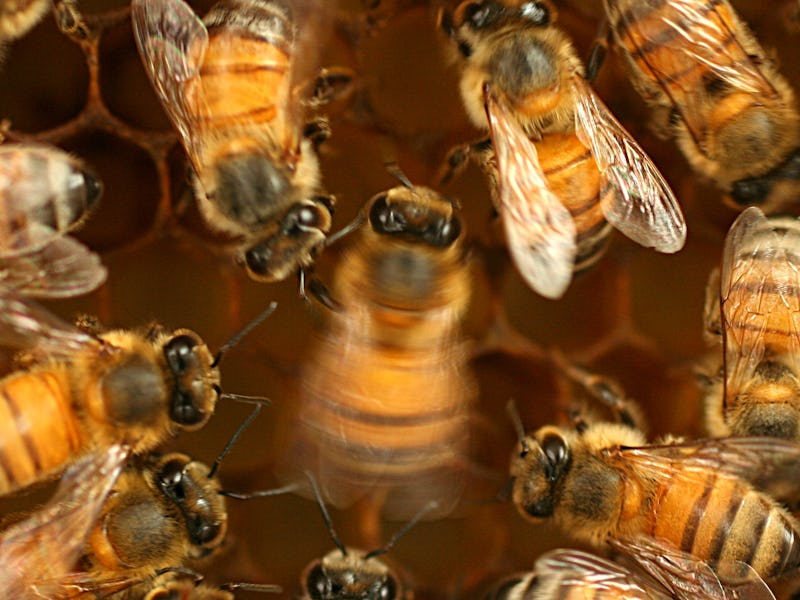Bees Learn to Dance Like Humans Learn to Talk
Many young animals learn by mimicking their elders — and researchers just found out how important that practice is for honeybees.

When a honey bee returns to the nest after foraging for food, it breaks into dance. Moving in a figure-eight shape while shaking its abdomen helps the bee communicate to others how far away the tastiest flowers are in a performance called the waggle dance.
Learning this dance is essential to communicating with the colony, and a rite of passage for young honey bees. As worker bees grow up and become foragers, they learn the moves of the time-honored waggle dance from their elders. But what happens when a bee can’t watch and learn?
A study published this week in the journal Science investigates just how important role models are for bees learning the language of dance. By isolating young bees from their elders, researchers observed that social learning is vital for getting the moves right.
Follow the Leader
Social learning is something humans know well. As babies, we babble based on what we hear from adults speaking around us. As teenagers, we pick up on societal norms from our peers that influence how we act in public. And as adults, we learn new skills from others in jobs and social clubs.
Many non-human animals also rely on social learning as they grow up. Birds, for example, watch their parents sing and fly in order to one day do those things themselves.
Scientists have known that honeybees — and many other insects — learn behavior from others in their social groups. One preprint (a study that has yet to undergo peer review) reports that workers begin to watch the waggle dancers and follow their lead at around eight days old.
This video provided by the researchers shows the crowded “dance floor” where experienced bees do their waggle dance to indicate where food is.
About 12 days into their short lives, the honeybees perform their first waggle dance. They learn how to show other bees how far away a flower is by encoding it into their movements.
Waggle dances look slightly different between honeybee species, and are likely influenced by genetics. But it wasn’t clear if a bee would be able to dance properly via genetics alone. So, for the new study, researchers raised bees that grew up without ever watching another bee dance.
Dancing with myself
The researchers created colonies of young honeybees that were all the same age. Not a single elder was around to teach them how to waggle.
As the honeybees grew up, they started to leave the hive and forage. They’d bring back information about where food was located, and were pressed with the task of dancing in order to show others in the hive where to find it.
The bees could waggle, but their movements were off. Compared to waggle dancers from the control hive, they had “significantly more disordered dances,” the researchers write. That includes encoding the wrong distances for where food sources were located.
Once the bees began to watch and mimic their peers as they aged, their performances began to improve. The encoding errors that they developed in their early days got less prominent over time, but never fully went away.
“Our results indicate that we permanently altered distance encoding in our experimental colonies,” the researchers write. “After our treatment, novice dancers continued to make the same distance-encoding errors even near the end of their adult lives despite decreasing their directional errors and dance disorder.”
Get wiggy with it
The bees who learned without their elders essentially created a new dialect. By practicing the waggle dance and eventually observing their peers, they found a way to communicate amongst themselves in a unique environment.
But the results clearly show that the bees were better off with the help of a role model. The control hive learned dances faster and with greater accuracy — and never had the same distance encoding problems as the experimental hive.
“We are beginning to understand that, like us, animals can pass down information important for their survival through communities and families,” said study co-author James Nieh, a professor of biological sciences at UC San Diego, in a press release. “Our new research shows that we can now extend such social learning to include insects.”
This article was originally published on